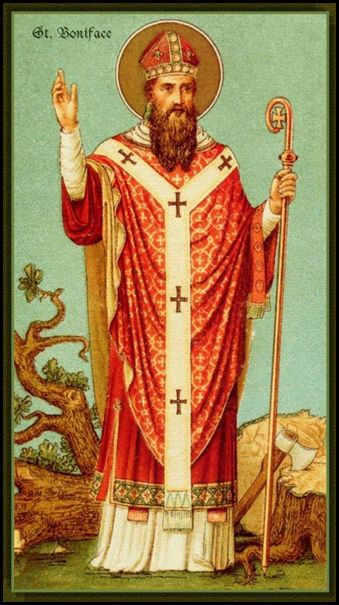Life of Saint Boniface
Saint Boniface, Apostle to Germany - Patron of the Archdiocese of Saint Boniface 
- In 675, Boniface was born near Exeter in Wessex, England, under the name of Winfrith.
- Even as a child he recognized his vocation; he was raised as a Benedictine Oblate. Having successfully completed his studies in Nursling, he became the director of the monastery.
- At the age of 30, he was ordained priest. In 711, along with a few companions, he set out for Friesland (Holland). The following year, he journeyed to Rome. Pope Gregory II changed his name to Boniface (“one who possesses a favourable destiny”) and launched him in a mission with the Germanic tribes, in Thuringia and Hesse.
- In 722, the Pope summoned Boniface to Rome to consecrate him bishop. Upon his return to his mission, he began his efforts to evangelize the pagans with quite a spectacular act, where he felled the oak sacred to the god Thor, near Fritzlar.
- In response to the report of Boniface’s work, the new pope Gregory III invested him with the pallium; he conferred upon him the dignity of becoming archbishop.
- He turned to Bavaria where he eventually installed 4 bishops in Salzburg, Freising, Ratisbonne and Passau; he returned to Rome, giving the results of his endeavours to the pope.
- He then devoted himself to the reform of the Church of Gaul.
- In 744, at the age of 60, he founded the monastery of Fulga. In 748, he became the archbishop of Mainz.
- Despite his age, Boniface continued to think about the evangelization of the pagans. He turned toward Friesland, the first scene of his missions. In his last instructions, he wrote: "I cannot refuse this long awaited journey. My final day is nearing. Soon to be liberated from this imprisoned body, I shall leave to collect the eternal reward…"
- On June 5, 754, he and his companions were massacred at Dokkam, in Friesland. The body of Boniface was taken to Fulda.
- Fulda remains the religious catholic centre of Germany.

